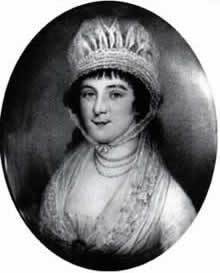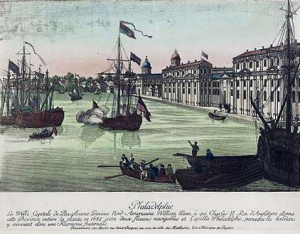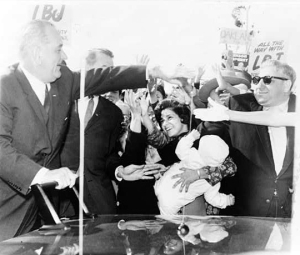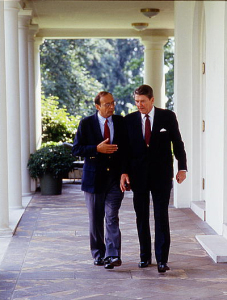Jane Hampton Cook's Blog, page 13
October 23, 2014
An Ebola-like Disease that Evacuated the Nation’s Capital and Changed the Presidency

Dolley Payne Todd Madison, Library of Congress
Oct. 24, 1793, Philadelphia
“The managers report that they have received six men and buried four men in the last twenty-four hours,” recorded the secretary for the committee combating yellow fever in Philadelphia.
Yellow fever, an Ebola-like epidemic, struck Philadelphia, the nation’s capital city, in August 1793 and killed as many as 5,000 before frost arrived and stopped its spread.
“Orders were informed this day from the City Hall of the interment of thirteen persons,” the committee concluded in its Oct. 24 report.
One of those who died that day was John Todd, the husband of Dolley Payne Todd, the woman who later married James Madison, who became the fourth president of the United States.
John Todd was a respectable Quaker lawyer, devoted to his wife, children, and parents. A few months earlier on July 30, he had written Dolley a letter that showed his love for her and their oldest son, a toddler. “I hope my dear Dolley is well and my sweet little Payne can lisp Mama in a stronger voice than when his father left him.”
By October 1793, John’s parents were ill with the disease known for its black vomit and blood leaking from the skin, nose, and eyes. Because it turned skin yellow, it was called yellow fever.
“A revered father in the jaws of death and a love’d husband in perpetual danger,” Dolley wrote about her father-in-law’s illness to her brother-in-law on Oct. 4, 1793.
She hoped that her in-laws could leave the city and take refuge elsewhere. “. . . I am almost distracted with distress and apprehension–is it too late for their removal? Or can no interference of their earthly friends rescue them from the too general fate?”
As many as 17,000 people, including members of the federal government, had left or would soon leave Philadelphia, whose population was more than 28,000 according to the 1790 U.S. Census. President George Washington departed the disease-afflicted city to attend the September 18 cornerstone-laying ceremony for the U.S. Capitol in Washington City, slated to become the nation’s capital in 1800.
Dolley explained why her immediate family didn’t flee the city.
“I have repeatedly entreated John to leave home from which we are now unavoidably banished, but alas he cannot leave his father,” she wrote, adding that her youngest child, an infant, was sick and she would not leave him.
Her infant died, as did John Todd and his parents. Dolley and her oldest son, Payne Todd, survived. She was a widow and her child had no father.
Back then, no one knew that mosquitoes carried yellow fever. Unlike Ebola today, yellow fever does not transfer from person to person through bodily fluids. Once frost arrived and mosquitoes disappeared, the disease stopped spreading in Philadelphia that year.
Thus, in a strange way, a historic epidemic played a domino-like role in presidential history. Had Todd survived, Dolley would not have married Congressman James Madison a year later in 1794. Seventeen years older than she, he’d not been lucky in love before meeting her.
While Madison might have become president without Dolley, she played a critical role in his public image. Her charisma and charm made up for his introverted, social deficiencies. Many important and influential people might not have met Madison or considered him for president had it not been for Dolley’s parties and her outgoing personality, which drew people to him. Her charismatic charm and beauty attracted others, while his intellect impressed those who credited him as the Father of the U.S. Constitution.
Though her life was forever changed by the yellow fever epidemic 221 years ago today, Mrs. Madison left an indelible mark in American history .
Jane Hampton Cook is the author of America’s Star-Spangled Story and American Phoenix and six other books. http://www.janecook.com/books.htm


Midterms in Historical Context: Eisenhower and Truman

Harry Truman sits at his desk, 1945. Library of Congress.
On Nov. 4, 2014, Americans will vote in midterm elections, the second of Barack Obama’s presidency.
To place these midterms into historical context, we’ve looked at Presidents Bush, Clinton, and Reagan’s second midterms. We’ve also looked at the atypical 1960s and 1970s, where no president had a normal six-year midterm election.
Now let’s take a longer look back at two midterms that were more typical of the “sixth year” itch, where Americans often support the opposite party of the president in power, particularly when the economy is weak and foreign policy is unpopular.
1958 Midterms, President Dwight Eisenhower, Republican
This was a sweeping election that strengthened the bare majority held by the Democrats in the U.S. Senate into a wide majority in both houses. The Democrats gained 16 seats in the Senate and 48 seats in the House. Three of these Senate pickups were for the new states of Alaska and Hawaii (which voted in 1959).
Though Eisenhower’s approval was a healthy 57%, the economy was the driving force behind these midterm losses. The country was in a recession. Unemployment was a problem. Labor unions were unhappy with Eisenhower, who opposed many of the right-to-work initiatives on the ballots in several states. Likewise, the Russians had successfully launched Sputnik in 1957, igniting the race for space with America appearing far behind.
1950 Midterms, President Harry Truman, Democrat
This was a moderate election that reduced the majority of Democrats in the U.S. Senate.
The Republicans gained five seats in the U.S. Senate and 28 seats in the U.S. House. This weakened the Democratic majority in the Senate to a two-vote margin.
An economic recession and Truman’s foreign policy played a role, especially the war in Korea and the Cold War. Truman had taken office in April 1945 after the death of Franklin Roosevelt, four months into Roosevelt’s fourth term. By the time of the 1950 midterms, Truman had been in office five years. His September 1950 approval rating polled by Gallup was a low 37%.
Jane Hampton Cook is the author of America’s Star-Spangled Story and American Phoenix and six other books. http://www.janecook.com/books.htm


October 21, 2014
First Lady Fashion Designer Oscar de la Renta Dies
Starting with Jackie Kennedy, you can’t study first lady fashions without coming across Oscar de la Renta’s name and his legendary work. He passed away this week. Here are statements from Laura Bush and Hillary Clinton on his passing:
STATEMENT BY MRS. LAURA BUSH ON THE PASSING OF OSCAR DE LA RENTA
![lwb-whitehouse[1]](https://i.gr-assets.com/images/S/compressed.photo.goodreads.com/hostedimages/1414006982i/11593540.jpg) Dallas, Texas — “George and I are deeply saddened by the loss of our dear friend, Oscar de la Renta. We will miss Oscar’s generous and warm personality, his charm, and his wonderful talents.
Dallas, Texas — “George and I are deeply saddened by the loss of our dear friend, Oscar de la Renta. We will miss Oscar’s generous and warm personality, his charm, and his wonderful talents.
“My daughters and I have many fond memories of visits with Oscar, who designed our favorite clothes, including Jenna’s wedding dress. We will always remember him as the man who made women look and feel beautiful.
“George, Barbara, Jenna, and I send our heartfelt sympathy and prayers to Annette de la Renta, Alex and Eliza Bolen, and all of Oscar’s loving family and friends.”
Statement from Bill and Hillary Clinton, and Chelsea Clinton and Marc Mezvinsky, on the Passing of Oscar de la Renta
![Hillary_Clinton_at_the_1992_Inaugural_Ball[1]](https://i.gr-assets.com/images/S/compressed.photo.goodreads.com/hostedimages/1414006982i/11593541.jpg) We are deeply saddened by the passing of our dear friend, Oscar de la Renta. His singular talent and exquisite taste elevated American fashion, and his warmth and friendship will be missed by our family and all whose lives he touched in his extraordinary journey.
We are deeply saddened by the passing of our dear friend, Oscar de la Renta. His singular talent and exquisite taste elevated American fashion, and his warmth and friendship will be missed by our family and all whose lives he touched in his extraordinary journey.
Oscar’s remarkable eye was matched only by his generous heart. His legacy of philanthropy extended from children in his home country who now have access to education and healthcare, to some of New York’s finest artists whose creativity has been sustained through his support.
We will always be grateful to Oscar for the love he showed us, and for sharing his talent on some of the most important occasions of our lives. And we will never forget the joy, adventure, and beauty we shared with Oscar, his beloved wife, Annette, and their family during our many happy times together, especially those spent in his beloved Dominican Republic.
We join his family and many friends and admirers all over the world in mourning his loss, while also celebrating his beautiful and joyous life.


October 20, 2014
Is Ebola the Modern-Day Yellow Fever? Medical Similarities and Differences

Early Philadelphia, Library of Congress
As of today, 4,493 people have died from Ebola, according to the World Health Organization. Two Dallas-area nurses, who treated a now-deceased infected patient who came to Texas from Liberia in West Africa, are hospitalized with the disease.
A similar number of casualties–as many as 5,000 people–died during the yellow fever epidemic in 1793 in Philadelphia, which was the capital city of the United States at the time. The number is staggering, considering that the population in Philadelphia in the 1790 U.S. Census was 28,522, making it the second largest city in the United States.
What are the medical similarities and differences between Ebola today and yellow fever back then? Let’s put today’s Ebola outbreak into historical medical context.
Medical similarities and differences
A rare hemorrhagic fever, Ebola symptoms include diarrhea, vomiting, muscle pain, severe headache, weakness, and abdominal pain. It features unexplained hemorrhage through bleeding and bruising.
Symptoms of yellow fever also include hemorrhage, such as blood oozing from the eyes, nose and mouth as well as black and red vomit. Skin and the whites of the eyes become yellow, which give the fever its name.
The major difference is how the diseases spread. Knowing how a disease spreads is critical for containing it, which distinguishes modern Ebola from yellow fever epidemics in the past.
Ebola spreads when someone comes into contact with the bodily fluids of someone who has the disease. Hence, health care workers treating those infected are at the greatest risk and require protective gear when treating patients. Symptoms emerge between 2 to 21 days after Ebola exposure. Patients who survive develop immunity to the disease.
Unlike today, the problem with yellow fever 221 years ago was that people didn’t know how it spread. Fear of coming into contact with someone who had the disease was high. Residents of Philadelphia in 1793 didn’t know that yellow fever spreads through mosquitoes, not contact with those infected or their bodily fluids.
How did yellow fever become an epidemic back then? Several Caribbean Island refugees were infected with yellow fever when they arrived in Philadelphia by ship in 1793. Mosquitoes in Philadelphia bit the infected refugees and carried the disease to local residents through subsequent mosquito bites. The people of Charleston, South Carolina, experienced a similar outbreak of yellow fever in 1745. Baltimore and New Haven also later experienced outbreaks, but none compared to the 1793 epidemic in Philadelphia.
Discovering that mosquitoes carried yellow fever didn’t take place until 1881. Carlos Finlay, a Cuban doctor, made the discovery while U.S. Army Surgeon General Walter Reed confirmed it through experiments. This led to containing the disease by reducing mosquito populations. Max Theiler developed a vaccine for yellow fever in 1937 and later won a Nobel prize for it. Yellow fever exists today in South America and Africa in populations that lack access to the vaccination.
For more information:
Historical Society of Pennsylvania
World Health Organization
Jane Hampton Cook, author of eight books, including American Phoenix.


October 16, 2014
Atypical midterms in the 1970s and 1960s: Carter, Nixon-Ford, Kennedy-Johnson

Lyndon Johnson campaigns, Library of Congress.
With the November 2014 midterm elections less than a month away, it’s useful to view political events in historical context. Will the president’s party lose seats, as is typical in a midterm election in a second term?
Sometimes circumstances and events break the norm. In the 1970s and 1960s, there were no midterms held in the second full term of any president.
Jimmy Carter
Elected in 1976, Jimmy Carter was a one-term president who never reached a sixth year. The Republicans gained 15 seats in the House and three in the Senate during the 1978 Congressional elections in Carter’s only term.
Gerald Ford and Richard Nixon
Likewise, Gerald Ford became president in Nixon’s sixth year, just before what would have been Nixon’s second term midterms. The Watergate scandal led Nixon to resign on August 8, 1974. Ford pardoned him a month later. Hence, the American people overwhelmingly voted Democrat in the November 1974 midterms, with the Democrats gaining 49 seats in the U.S. House and three in the U.S. Senate.
Lyndon Johnson and John F. Kennedy
John F. Kennedy was assassinated in his first term, making Lyndon Johnson president in 1963. He won election in his own right in 1964. Two years later the Republicans gained 47 seats in the House and three in the Senate in the 1966 midterms.
Johnson’s fifth year in office took place during the presidential election year of 1968. With the war in Vietnam a disaster, Johnson decided not run for re-election. Richard Nixon won the presidency in 1968, while the Republicans gained three seats in the U.S. House, five seats in the Senate, and another Senate seat in a special election.
Though first term midterm elections took place, no president in the 1960s or 1970s held a typical second term in office.


October 14, 2014
My C-SPAN Book Talk on American Phoenix

 Wanted to share with you my talk on my Pulitzer-nominated book, American Phoenix, which C-SPAN recently aired. I’m also working with a film producer to bring this story to film.
Wanted to share with you my talk on my Pulitzer-nominated book, American Phoenix, which C-SPAN recently aired. I’m also working with a film producer to bring this story to film.


October 9, 2014
Midterms in Historical Context: Reagan in 1986

Ronald Reagan walks with Senatorial candidate Al D’Amato in 1986. Photo donated by Carol Highsmith to the Library of Congress, public domain.
Up next in putting midterms into historical context is Ronald Reagan. He was the first president since Eisenhower to serve all eight years of two terms.
1986 Midterms, President Ronald Reagan, Republican
The year 1986 was a moderate change of power election, not a sweeping change with numerous seat pickups. The Democrats gained five seats in the U.S. House of Representatives and eight seats in the U.S. Senate, taking control of the Senate for the first time since 1980.
Though Reagan’s approval ratings were in the 60% range in 1986, many of the Republican Senators up for election held freshman seats that were more difficult to defend. Like Clinton after him, Reagan had already faced his worst midterm. In 1982 Reagan’s approval hit 41%, among the lowest of his presidency, and the Democrats gained 25 seats in those midterms. Because the economy had improved significantly since the 1982 midterms, the Democrats made only modest gains in the U.S. House.


October 7, 2014
iPhone 6–John Quincy Adams needed one 200 years ago today
Among the many attractive features of the new iPhone 6 is its speed. Some have touted it as “insanely faster” than the iPhone 5.
Two hundred years ago today, on Oct. 7, 1814, John Quincy Adams could have used an iPhone or any phone for that matter, even one with a cord.
Adams was serving as one of five members of the U.S. team negotiating a peace treaty to end the War of 1812 between America and Britain. The negotiations with three British delegates had been taking place in Ghent, Belgium.
The bad news literally arrived in his bedchamber. A messenger–his brother-in-law George Boyd –burst into John Quincy’s Belgium hotel room early in the morning on October 7, 1814. Married to a younger sister of Louisa (John Quincy’s wife), Boyd was fresh off the boat, having traveled as a government agent across the Atlantic Ocean to deliver the urgent—but now six-weeks-old—news to the U.S. commissioners.
The British army and Marine Corps had burned the White House and U.S. Capitol on August 24, 1814.
“The newspapers contain a great variety of details respecting the fall of Washington and the destruction of buildings and of property, public and private, effected by the enemy,” Adams gravely wrote to Louisa.
The destruction of the White House and U.S. Capitol seemed to give the British negotiators the upper hand in the negotiations. What would happen next? Would the British sever the United States into two, with New England returning to British rule?
What Adams didn’t yet know on Oct. 7 is that a victory had already taken place that would return the advantage to the Americans in the negotiations. The people of Baltimore–more than 15,000–had already driven out the British military, who fled the East Coast after the Battle of Fort McHenry on Sept. 13-14.
Though communication was slow, once Adams and the others learned about the victory in Baltimore, they were able to propose a plan for the boundaries of the United States and Canada to return to where they were before the war began. News of that proposal would also take six weeks to reach America, but when it did, it would signal that peace was at hand and the war was over.
No doubt that John Quincy Adams would have loved and valued the speed of the iPhone and any other phone. A lover of science and a penchant for quips, he would have tweeted about the treaty, saying it was the “happiest day of his life.”
Excerpted in part from American Phoenix, Jane Hampton Cook’s book about John Quincy and Louisa Adams and the War of 1812. Discover more through Jane’s C-SPAN speech.


October 2, 2014
Watch C-SPAN’s BookTV Oct. 4 at 11 PM E
Bush and Clinton: Midterms Six Years after a President’s Rise to Power

George W. Bush and Bill Clinton, officials portraits, Library of Congress.
This year marks six years since Barack Obama was elected president in 2008. Like other presidents before him who have served two terms, he faces a midterm election that could effect the rest of his presidency, especially if the Republicans change the balance of power by taking control of the U.S. Senate. On Nov. 4, 2014, Americans will elect local and state leaders, members of Congress, and, in many states, a U.S. Senator.
To put the 2014 midterm elections into historical context, what were the midterm results of other presidents who held two terms or who reached a sixth year?
Let’s look at the two most recent presidents who faced midterms in a second term.
2006 Midterms, President George W. Bush, Republican
2006 was a change in power election, with the Democrats taking control of both the House of Representatives and U.S. Senate for the first time in 12 years.
The Democrats gained 32 members in the House and six seats in the Senate with one Democratic senator converting to an independent but agreeing to caucus with the Democrats.
The driving issues were dissatisfaction with the War in Iraq and moral scandals in Congress. President Bush’s approval ratings were in the 40% range. In contrast, the Republicans gained 10 seats during the midterm elections in Bush’s first term in 2002.
1998 Midterms, President Bill Clinton, Democrat
This was a modest election, but historic because it defied the typical trend of the president’s party losing seats. Instead the Republicans lost five seats in House of Representatives but retained a majority in both the Senate and House.
Despite a moral scandal involving a White House intern, President Clinton’s approval rating was in the 60% range in 1998, likely because the economy was strong. The federal government had reached a budget surplus for the first time in nearly 30 years and more than 70% of Americans had confidence in the economy.
In addition, Clinton had already faced his worst midterm election. The Republicans had swept the 1994 midterms, when Clinton’s approval was 37%, the lowest of his presidency. The 1994 midterms were called the Republican Revolution because the Republicans gained 54 seats in the House of Representatives and eight seats in the Senate.







